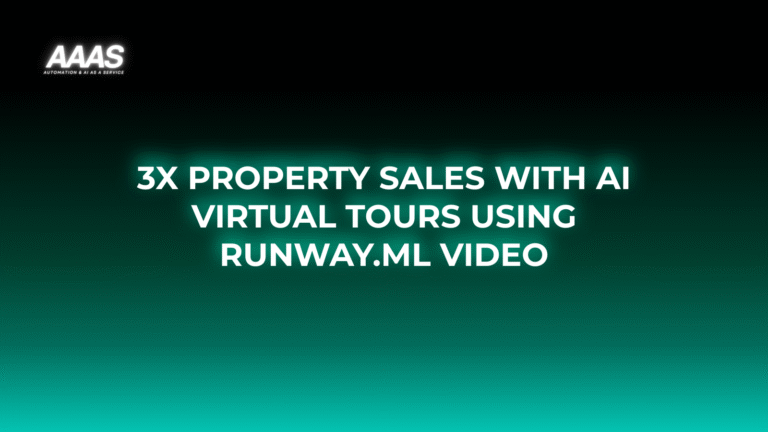Leveraging AI and No-Code Automation for Streamlined SaaS Workflow Integration

Market Problem
The explosive adoption of SaaS tools has created new inefficiencies. Teams often juggle dozens of disjointed platforms, with manual data transfer and repetitive multi-step tasks. Lack of native integrations and custom coding requirements force companies to invest heavily in technical resources, resulting in:
- Lost productivity due to context switching and manual entry
- Increased operational costs and error rates
- Bottlenecks in scaling processes as businesses grow
- Difficult, slow adoption of new SaaS solutions
McKinsey research shows over 69% of organizations struggle with inefficient workflow connectivity, slowing digital transformation.
Solution and Benefits: AI & No-Code Automation
AI-powered no-code automation platforms solve these challenges, allowing businesses to quickly integrate, automate, and optimize SaaS workflows—all without writing code or relying on IT backlogs.
Core Benefits
- Higher Efficiency: Automate repetitive work and seamless data transfer between SaaS apps.
- Improved Productivity: Free employees for high-value tasks; reduce human error.
- Cost Reduction: Eliminate custom API development, reduce IT overhead, lower maintenance costs.
- Scalability: Easily onboard new tools and automate workflows as teams grow.
- Faster Time-to-Value: Go live with integrations in hours—not weeks or months.
No-code platforms with built-in AI (like Zapier AI, Make AI, Integrately AI) bring recommendation engines, document parsing, natural language triggers, and smart error handling into every workflow.
Real Use Cases of AI & No-Code Workflow Integration
- Lead Qualification: Automatically sync leads from web forms to CRM, trigger Slack updates, and personalize outreach with AI-driven scoring.
- Invoice Reconciliation: Extract invoice data with AI OCR, match to payment records, and update cloud accounting software like Xero or QuickBooks.
- HR Onboarding Automation: Orchestrate user account creation across apps, generate contracts, schedule welcome emails, and collect e-signatures in one flow.
- Customer Support Routing: Analyze incoming tickets with LLMs (Large Language Models); triage and assign cases to the right team automatically.
Industry leaders like Gartner predict that by 2025, 70% of new app integrations will be built using low-code/no-code platforms.
Technical Details
Core Components
- Drag-and-Drop Builders: Design workflows visually; no coding required.
- Prebuilt SaaS Connectors: Hundreds/thousands of apps out-of-the-box (Salesforce, Slack, HubSpot, Gmail, Notion, etc.).
- AI Integrations: Use LLMs for document parsing, chat, smart triggers, workflow recommendations.
- Conditional Logic: Route data and decisions based on real-time criteria.
- Advanced Security: OAuth, encryption, audit trails, GDPR/CCPA compliance.
Typical setup does not require any code or API keys; business users orchestrate workflows via point-and-click interfaces. For complex needs, platforms allow custom code blocks or webhook integration.
Comparison With Alternatives
| Approach | Speed | Cost | Maintenance | Flexibility |
|---|---|---|---|---|
| Traditional Custom Coding | Slow (weeks–months) | High (dev hours) | Difficult (developer required) | Maximum, but time consuming |
| No-Code Automation | Fast (hours–days) | Low–mid (subscription) | Easy (business user) | High for most use-cases |
| Native SaaS Connectors | Medium (days–weeks) | Usually low/covered by vendor | Low (limited change) | Limited (only popular use-cases) |
The best balance for most organizations is no-code AI-based automation—especially when speed and agility are priorities.
Pricing Table: Leading No-Code AI Automation Platforms
| Platform | Free Plan | Business Plan (per month) | AI Features |
|---|---|---|---|
| Zapier | Yes | From $49 | AI-powered workflow builder, AI actions & triggers |
| Make | Yes | From $16 | AI modules for data, text, and image processing |
| Integrately | Yes | From $29 | AI-based logic and smart mapping |
| n8n | Yes (self-hosted) | From $24 | AI nodes (incl. OpenAI, Claude) |
Most vendors offer free tiers, pay-as-you-go, and enterprise pricing. Volume, premium connectors, and AI features may cost extra. For more, see [InternalLink:no-code-automation-platforms|Best No-Code Automation Platforms].
ROI-Focused Practical Examples
- SMB Sales Team: Automating lead entry, assignment, and follow-ups saves 10+ hours per employee/month = $6,000+ annual savings per 5-person team (based on $50/hour).
- Finance Department: AI invoice OCR & reconciliation cuts manual processing by 80%, freeing up staff for analysis rather than entry. ROI within 3 months via labor savings alone.
- IT Operations: Workflow automation reduces ticket triage time by 50%, improving SLAs and customer satisfaction.
Organizations typically report 30–60% decrease in repetitive admin tasks after automation (Forrester TEI).
Setup Steps: How to Implement AI and No-Code SaaS Workflow Automation
- Identify High-Impact Workflows: List out repetitive manual processes between SaaS apps.
- Choose a No-Code AI Platform: Evaluate features, integrations, and AI offerings.
- Map the Workflow: Visualize steps, triggers, and data handoffs.
- Connect Your Apps: Use built-in connectors or authorize accounts.
- Add AI Elements: Integrate LLMs for smart parsing, data enrichment, or document handling.
- Test Thoroughly: Use sandbox/test data to validate every step.
- Deploy and Monitor: Go live, track success metrics, and refine based on insights.
Pros and Cons
| Pros | Cons |
|---|---|
|
|
Expert Tips for Success
- Automate the most frequent, least variable processes first for maximum ROI.
- Document ownership and review flows to avoid automation errors.
- Leverage AI for data enrichment and error handling to minimize exceptions.
- Monitor usage and trigger alerts for failed automations to ensure reliability.
- Continuously gather feedback from end users to iterate and improve automations.
FAQ: AI & No-Code Automation for SaaS Integration
- Is it secure to automate workflows with no-code/AI platforms?
- Yes, reputable providers use strong encryption, OAuth, and meet compliance like GDPR/CCPA. Always review their security documentation.
- Can non-technical staff build automations?
- Absolutely. No-code platforms are designed for business users with drag-and-drop UIs and guided tutorials.
- What if I need a custom integration not supported by default?
- Most platforms support HTTP/webhooks or code blocks for custom scenarios—rarely is coding needed, but flexibility is there if required.
- What is the difference between no-code and low-code?
- No-code is 100% visual, for business users; low-code requires some scripting and is aimed at power users or developers.
References & Citations
Last updated: August 26, 2025







